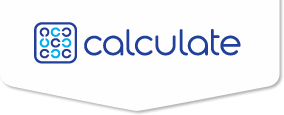Part 1: Students Say Your Website Can Make or Break Their Enrollment Decision
Part 1: What information students seek & where they expect to find it

This data offers insight that is useful to enrollment professionals. By knowing what students search for and how, you can:
- Deliver the information they’re seeking in the time allotted
- Inspire them to take the next step in the enrollment cycle
- Capture their contact information
It Starts Online. High school students today spend an average of 9 hours a day online. They are savvy digital users and expect to find the information they’re seeking within 8 seconds. While they take a multi-channel approach to college search, students cite a school’s website as the top influencer.
Your Website’s “Make-It-or-Break-It” Capacity
Students say a school’s website is the most influential source of information , often determining whether or not they will make an official inquiry. If students can’t find what they’re looking for or are uninspired by what they see, they’re gone.
Luckily, students tell us exactly what they want from a website at this stage. They’re looking for:
- An easy-to-access list of majors; Check to see: Does your website have one complete list of majors in the top-level navigation?
- A feel for the school and their ability to fit in; Check to see: Does your site feature stories and images of real students, their challenges and triumphs? Does it show an inclusive community in a variety of forms?
- Detailed information about each major; Check to see: Do your academic program pages include up-to-date information on career potential? Do they highlight student success, along with each major’s special attributes e.g. labs/facilities, experiential opportunities, industry connections?
- Information on tuition, scholarships/ financial aid, location, and how to apply; Check to see: Is this information easy to access from whatever point a student enters the site? Does it inspire the student to take the next step? Is that next step readily available?
How Students Make Contact
If a student is interested, they have a preferred way of connecting: 76% will complete a Learn More form on the website, but 40% will stop filling it out if it asks for too much information. Check to see: Are your forms are easily accessible with no more than 4 fields?
Fewer prospects will connect by: listing the school on the ACT/ SAT forms (54%); emailing for more information (46%); registering for a campus visit (40%); or responding to a mailing (39%).
Tip: Web forms are essential conversion tools. At one institution where we built an enrollment-generating website, 37% of all applicants came through the site’s conversion forms, making the website the school’s top recruiter.
Websites can seem overwhelming so consider implementing changes in stages. Below is a recap of the essential information which can serve as a starting point. Part 2 will address how students search (including terms used), the importance of academic program pages and inspiring content.
Takeaways
- At the top of their search process, a prospective student will judge your institution by the content and function of its website
- They want essential information (list of majors, tuition costs, etc.) that is easy to find
- If you want them to take the next step (e.g., Apply, Visit) you need to inspire them to do so and make that next step readily available
- Web forms (brief and strategically placed) have enormous conversion potential.
Next Step
Contact us to learn more about our enrollment-generating website services.

